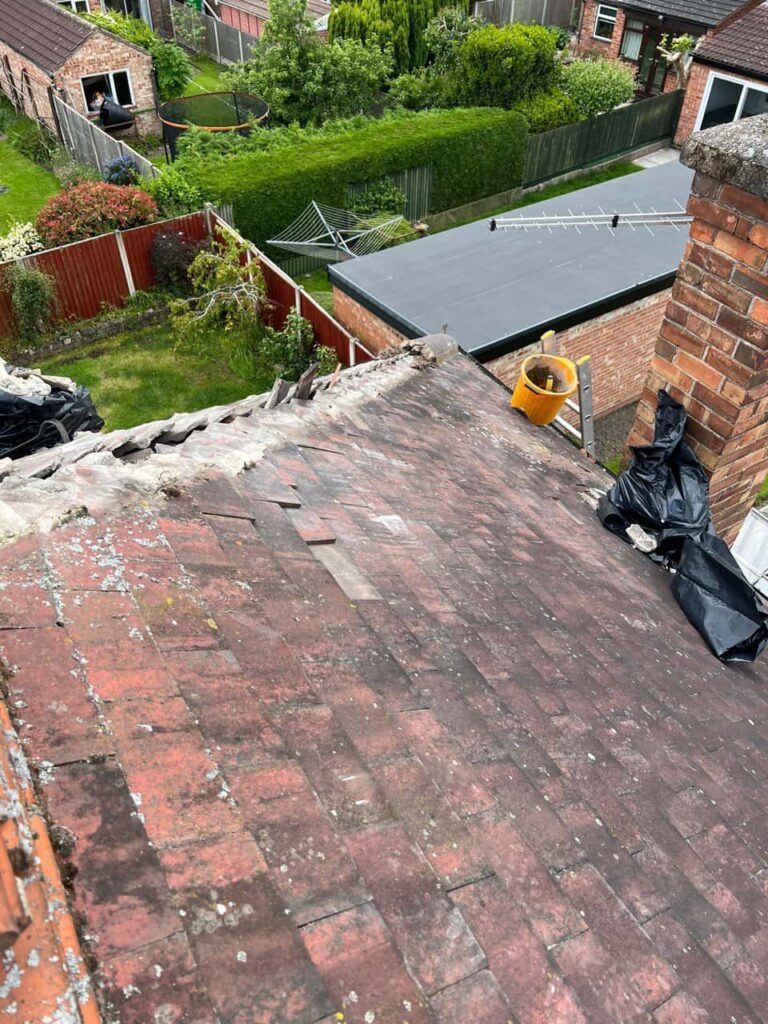Introduction
Keeping your roof in good condition doesn’t always require a ladder and a toolkit. In fact, homeowners can perform basic visual inspections from the ground or upper windows to spot signs of damage before they become serious. At Warlingham Roofing Repairs, we often receive calls from clients in Surrey who spotted an issue early — which made their repair simpler, safer, and less disruptive.
While we always recommend professional inspection and repair for anything beyond a surface check, there’s plenty you can do yourself to keep an eye on your roof’s health.
Why Conduct a DIY Roof Inspection?
Prevention Starts With Observation
Roofs bear the brunt of every season — from heavy rain and wind to harsh sunlight and falling debris. Over time, even the strongest materials start to show signs of wear. A DIY inspection can help you:
- Spot minor issues before they escalate
- Decide whether professional help is needed
- Save money by avoiding emergency repairs
- Understand your roof’s overall condition
Most importantly, it puts you in control of your home’s upkeep and safety.
Start With a Ground-Level Look
What You Can See Without Climbing
Begin your inspection from the ground. Using binoculars, or just a keen eye, scan the entire roof surface. You’re looking for obvious signs of wear or irregularities. Keep an eye out for:
- Slipped or missing tiles
- Sagging sections of the roofline
- Dark streaks or stains (a sign of algae or moisture)
- Debris buildup in valleys or near chimneys
- Cracked or deteriorating flashing around joints and edges
Walk around your property for a full perimeter view, noting any differences between roof sections.
Check Inside the Loft
Interior Clues Can Reveal Hidden Issues
Your loft space is often the first to show signs of a roofing problem. With a torch in hand, examine the underside of the roof during daylight hours. Look for:
- Sunlight peeking through gaps
- Water stains or damp insulation
- Signs of mould or mildew
- Rust on roofing nails or metal supports
- A musty smell that suggests trapped moisture
These symptoms often indicate a roof is no longer watertight, especially following storms or long periods of rain.
Pay Attention to Gutters and Downpipes
Clogging and Overflow Tell a Story
Roof health is directly linked to how well water is drained from the surface. Blocked or damaged gutters can back up water and damage roofing edges. During your inspection, check for:
- Plant growth in guttering (moss and weeds)
- Shingle granules or tile fragments collecting in gutters
- Leaks from joints or seams
- Overflows during rain that suggest blockages
- Rust or corrosion on metal sections
If gutters are neglected, water can back up into your fascia and under your tiles — a fast-track to long-term damage.
Check After Storms or High Winds
Weather Can Uncover Weaknesses
Surrey weather can be unpredictable, and high winds or heavy rain can shift tiles or loosen ridge caps. After a storm, be alert to:
- Debris on the ground, such as broken tiles or flashing
- Piles of moss or leaves that could block water flow
- Leaks appearing suddenly indoors
- Chimney movement or visible leaning
Storm checks are especially vital for older roofs, where sealants or fixings may have degraded over time.
Take Notes and Photos
Evidence Helps You — and Your Roofer
As you complete your inspection, jot down everything you notice. Better yet, take clear photos if you can safely do so from the ground or windows. This documentation helps you:
- Track changes over time
- Explain concerns clearly when speaking to a roofer
- Spot recurring issues
- Back up future maintenance decisions
At Warlingham Roofing Repairs, we appreciate when clients provide photos — it helps us assess urgency and prepare properly for a site visit.
When to Stop and Call a Professional
Safety and Expertise Matter
DIY inspections should never involve walking on the roof. It’s dangerous, and without proper training, you risk damaging tiles or injuring yourself. If your inspection reveals:
- Structural concerns
- Leaks already inside your home
- Widespread tile displacement
- Signs of rotting timbers or sagging
… it’s time to get in touch. Prompt action can prevent thousands in future repairs.
Conclusion
A basic DIY roof inspection gives you the power to monitor your home’s first line of defence. By regularly checking for visible damage, moisture, debris, and structural changes, you can catch issues early and act confidently.
At Warlingham Roofing Repairs, we’re here to step in when your inspection turns up something concerning. Our local team in Surrey is ready to provide trusted, professional repairs that protect your property for years to come. Don’t wait until a small issue becomes a major one — start with a check, then leave the rest to us.
Call us on: 01883 779 994
Click here to find out more about Warlingham Roofing Repairs
Click here to complete our contact form and see how we can help with your roofing needs.

